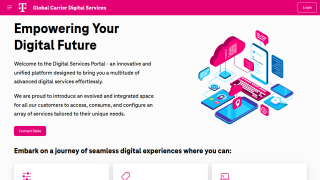
The enterprise segment offers one of the biggest carrier growth opportunities through services such as IoT, 5G, A2P messaging and cloud numbers. Howard Stevens, CEO of communications technology provider TOMIA, explains how carriers can take control in this world.
What are some of the key trends you’re seeing in the market and areas on which carriers need to focus?
Some of the key megatrends are based around the enterprise, driven by IoT and 5G. One of the things that occurred with Covid is that when operators looked at their roaming traffic knowing there were almost no humans in there but saw there were still lots of roaming connections, they began to realise that IoT was becoming a proper reality.
We’re seeing carriers build IoT agreements for things like containers, cars and even solar panels. They’re going to go from managing, say, 300 traditional roaming agreements to potentially many thousands, with many more parameters, and 5G is going to super-accelerate things.
Carriers can therefore take action in the IoT space to help control and manage their quality of service and costs, and monetise those services. I think, realistically, for the bigger carriers to manage this effectively, they’re going to have to put a lot of automation in.
How will this challenge evolve as IoT grows?
An operator’s life is going to become more complex, as many enterprises will want special and often unique agreements, yet a seamless global service. If carriers don’t keep control of that, they will either lose margin or, worse, control of the service they’re delivering to enterprises in the background.
However, I think 2023 is going to be the year where those that are organised will start to see an interesting revenue opportunity for it.
Although individually, many of these IoT devices won’t make a significant amount of money, the sheer growth and scale of this will make it into something that very rapidly becomes an interesting revenue stream from a roaming point of view.
How is TOMIA seeking to help operators meet this challenge and capitalise on the IoT market?
We have various advanced analytics, rating and AI-driven learning capabilities that can help operators understand what is a machine and what is a human. Once you understand that, you know better what’s going on and can start to monetise it.
We’re in a relatively unique position to be able to help because we have both network roaming and clearing capabilities, which give visibility on what devices are doing as data is exchanged between networks. We also have a strong analytics platform in the middle, giving all the information and decision-grade data required.
Meanwhile, there’s a new technology that has come out called BCE – billing and charging evolution – the full specification for which is still being developed through the GSMA. This has come about because of the need to find a new billing mechanism for IoT devices compared with the traditional way of doing this for humans.
We have a BCE offering today that provides mobile operators with flexible wholesale billing and settlement for IoT and 5G use cases, with several trials running.
How do some of the other services that TOMIA provides, such as A2P messaging and cloud numbers, fit alongside these offerings?
They’re different things, but they come from a similar theme of operators trying to tap new and growing revenue streams from the interconnectivity world in which we operate.
In terms of how you connect carriers to enterprises, the world of A2P has traditionally been dominated by the aggregator community. Carriers are realising that one of the spaces they can move further into is connecting direct to enterprises and taking that A2P traffic on themselves. We’ve had several major carriers take up A2P on our platform, taking more margins and control.
What opportunities and challenges do carriers face in moving deeper into the A2P messaging business?
It kept being thought that SMS would hit a peak, but it just keeps on going. Fundamentally, that’s because it’s the most trusted mechanism by way of connecting into your consumer base.
With A2P, carriers are realising that they can take that traffic on themselves and control access to their own environment.
Carriers have varied SMS infrastructure models and levels of access to resources. As a result, our carrier partners have shared that it can be challenging to identify the right business and operational model to pursue, which has delayed some in more directly monetising the A2P opportunity.
Some great feedback we have recently received from customers is how our expert advisors have helped them work out and implement models to maximise their revenue potential.
From our point of view, one of our roles going forward will be to continue helping carriers simplify the complex ecosystem.




